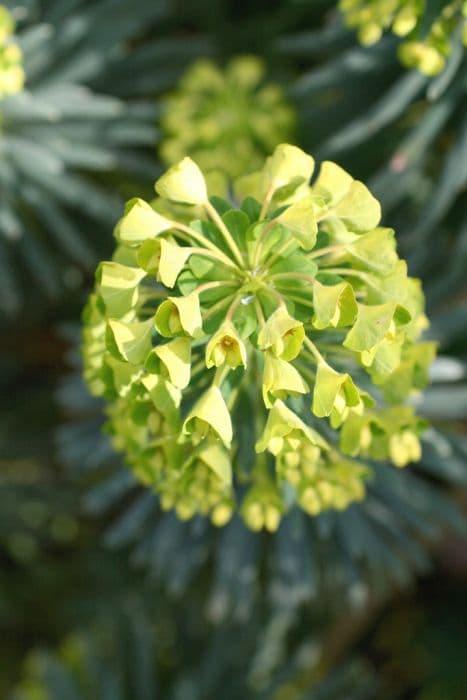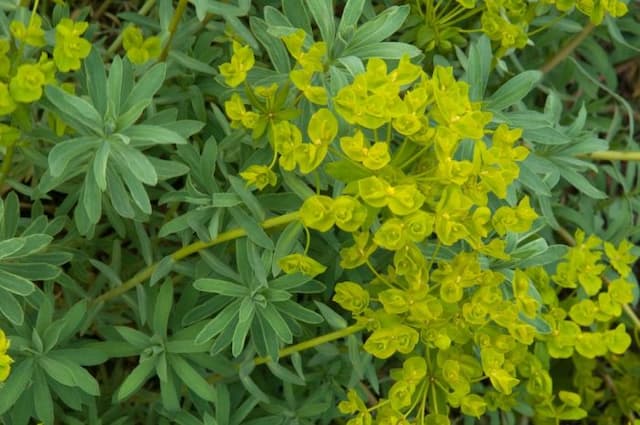Chenille plant Acalypha hispida

ABOUT
The plant known as the Chenille plant is characterized by its distinct and showy foliage coupled with striking, pendulous flower spikes. The leaves are broad and typically have a slightly serrated edge, showcasing a lush green color which provides a perfect backdrop to the real standouts of this plant – the flowers. The flower spikes, resembling soft, fuzzy caterpillars, comprise numerous tiny flowers densely packed together. They are most commonly seen in a vibrant shade of red, adding a dramatic splash of color to the plant's appearance. The soft, fluffy texture and bright color of the spikes create an intriguing visual contrast to the glossy leaves, making the Chenille plant a popular choice for both indoor and outdoor ornamental use.
About this plant
 Names
NamesFamily
Euphorbiaceae
Synonyms
Chenille Plant, Red Hot Cat's Tail, Foxtail, Monkey Tail
Common names
Acalypha sanderi, Acalypha densiflora, Ricinocarpus hispidus.
 Toxicity
ToxicityTo humans
The Chenille plant is not considered highly toxic to humans, but it can cause irritation if ingested. The most common symptoms of ingestion are burning or irritation of the mouth, lips, and throat, possible nausea, vomiting, and diarrhea due to its irritating sap. Handling the plant may occasionally result in skin irritation, so it's advisable to wear gloves when pruning or handling the plant extensively.
To pets
The Chenille plant can be toxic to pets if ingested, potentially leading to symptoms such as vomiting, diarrhea, and drooling due to irritation of the mouth and gastrointestinal tract. Perhaps more concerning is the potential for dermatitis in some pets upon contact with the plant's sap during grooming. Therefore, it's recommended to keep this plant out of reach of pets.
 Characteristics
CharacteristicsLife cycle
Perennials
Foliage type
Evergreen
Color of leaves
Green
Flower color
Red
Height
6-15 feet (1.8-4.6 meters)
Spread
3-6 feet (0.9-1.8 meters)
Plant type
Shrub
Hardiness zones
10
Native area
Pacific islands
Benefits
 General Benefits
General Benefits- Ornamental Beauty: Acalypha hispida, commonly known as the Chenille Plant, is prized for its unique and showy red tassel-like flowers that add aesthetic value to any garden or landscape.
- Wildlife Attraction: The flowers and foliage are known to attract butterflies and birds, providing ecological support and helping to maintain local biodiversity.
- Ease of Care: The plant is relatively easy to care for, requiring only basic gardening skills, which makes it a suitable choice for novice gardeners.
- Fast Growth: Chenille Plant has a rapid growth rate, allowing gardeners to enjoy its mature look within a relatively short period after planting.
- Adaptability: It is adaptable to a range of conditions, capable of growing in different soil types, and tolerating various levels of sunlight.
- Privacy Screening: Due to its density and growth habit, it can be utilized as a natural privacy screen in gardens or on patios.
- Soil Erosion Control: Its root system can help in stabilizing soil, thus preventing erosion in the garden area where it is planted.
 Medical Properties
Medical PropertiesThis plant is not used for medical purposes.
 Air-purifying Qualities
Air-purifying QualitiesThis plant is not specifically known for air purifying qualities.
 Other Uses
Other Uses- Chenille plant, Acalypha hispida, can be used in butterfly gardens to attract various species of butterflies with its vibrant flowers and rich nectar supply.
- This plant is often used in educational settings such as schools and botanical gardens to teach about pollination and unique plant reproductive systems.
- In some tropical and subtropical regions, chenille plants are utilized as living privacy screens or hedges because of their dense foliage.
- The plant's showy, cascading flowers make it a popular choice for hanging baskets and container gardening.
- Chenille plants are sometimes incorporated into aquatic garden settings, where they are planted along the banks and provide a colorful backdrop.
- The textural qualities of the plant make it a favored component in tactile gardens, which are designed to provide sensory experiences, especially for visually impaired individuals.
- Landscape artists use chenille plants for adding texture and a splash of color in tropical-themed gardens, contrasting with other foliage types.
- Used in craft and floristry, the dried and preserved flowers of the chenille plant can be incorporated into arrangements and decorations.
- In some cultures, the vibrant red tassels of the chenile plant are used as natural dye sources for fabrics and handcrafts.
- The plant can serve as a natural host for certain beneficial arthropods, such as spiders, that help control pests in gardens and farms.
Interesting Facts
 Feng Shui
Feng ShuiThe Chenille Plant is not used in Feng Shui practice.
 Zodiac Sign Compitability
Zodiac Sign CompitabilityThe Chenille Plant is not used in astrology practice.
 Plant Symbolism
Plant Symbolism- Exotic Beauty: Commonly known as the Chenille Plant, its unique, cascading, catkin-like red flowers symbolize exotic beauty and an attraction to the unusual.
- Lushness: The Chenille Plant's thick, verdant foliage represents lushness and abundance, often associated with a flourishing environment or overflowing emotion.
- Femininity: Due to its soft, fluffy, and elongated flowers, the Chenille Plant is often related to femininity and can represent the soft and gentle qualities typically associated with feminine energy.
 Water
WaterChenille plants prefer evenly moist soil, so it's important to water them regularly. It's advisable to water them once the top inch of the soil feels dry to the touch. Depending on the humidity and temperature, this may be approximately once a week. When watering, add water until it begins to drain out of the bottom of the pot, indicating that the soil is saturated. For a medium-sized plant, this might translate to about 16 to 24 ounces of water during each watering session.
 Light
LightChenille plants thrive in bright, indirect sunlight. They are best positioned in a spot where they will receive plenty of light but are shielded from harsh direct afternoon sun, which can scorch their leaves. A north or east-facing window with filtered sunlight is often ideal for providing the light these plants need to grow well.
 Temperature
TemperatureChenille plants are tropical and prefer warm conditions. The ideal temperature range for these plants is between 60 to 75 degrees Fahrenheit. They should not be exposed to temperatures below 55 degrees Fahrenheit, as cold drafts or sudden temperature changes can harm them. Ensure they're kept in a place where temperature fluctuations are minimal to maintain their health.
 Pruning
PruningPruning chenille plants helps to maintain their shape and encourage fuller growth. It's best to prune in early spring before the new growth starts. Cut back the stems by approximately a third of their length, and remove any dead or yellowing leaves to promote healthy development. Pruning can be done annually to keep the plant looking tidy and to stimulate the growth of those appealing red tassel-like flowers.
 Cleaning
CleaningAs needed
 Soil
SoilThe best soil mix for the Chenille plant should be well-draining and rich in organic matter, such as a mix of peat, pine bark, and perlite or coarse sand. The ideal soil pH for the Chenille plant is slightly acidic to neutral, ranging between 6.1 and 7.5.
 Repotting
RepottingThe Chenille plant should be repotted every 1-2 years or when the plant outgrows its pot, to ensure continued growth and to refresh the soil. Use a slightly larger pot each time to allow for new growth.
 Humidity & Misting
Humidity & MistingThe Chenille plant thrives in high humidity conditions, ideally between 60% to 80%. It benefits from regular misting or a humidifier in dry environments.
 Suitable locations
Suitable locationsIndoor
Place in bright, indirect light and keep soil consistently moist.
Outdoor
Grow in part shade, protect from strong winds, and water regularly.
Hardiness zone
9-11 USDA
 Life cycle
Life cycleCommonly known as Chenille Plant, Acalypha hispida begins its life cycle as a seed, which germinates in warm, moist soil to produce a seedling. The seedling grows into a vegetative stage characterized by its rapid leafy growth and the development of a strong root system. Following vegetative growth, the Chenille Plant enters the flowering stage where it develops distinctive, long, red, pendulous catkins that can bloom several times throughout the year in the right conditions. After pollination, which is often facilitated by wind or insects, the plant produces small capsules containing seeds. These seeds are eventually dispersed by various means, such as water or animals, completing the cycle with new germination. Given the right tropical or subtropical environment, the Chenille Plant can become perennial, continuing its life cycle for several years by repeating the flowering and seeding stages.
 Propogation
PropogationPropogation time
Spring-Early Summer
The most popular method of propagation for Acalypha hispida, commonly known as the Chenille Plant, is through stem cuttings. This process is usually done in late spring or early summer when the plant is actively growing. To propagate from stem cuttings, select a healthy, non-flowering stem and make a cut about 4 to 6 inches (approximately 10 to 15 centimeters) long, just below a leaf node. Remove the lower leaves and dip the cut end in rooting hormone powder to encourage root growth. Plant the cutting in a well-draining potting mix and keep the soil consistently moist without being waterlogged. Covering the cutting with a plastic bag can create a greenhouse effect, maintaining a high humidity level that is favorable for rooting. Roots typically develop within a few weeks, after which the new plant can be transplanted to a larger pot or to a suitable location in the garden.









